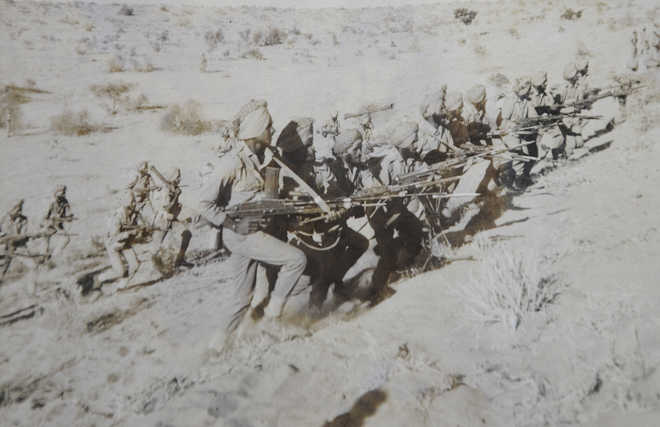Even as the Indian Army failed to strengthen its defences in time, junior officers and soldiers valiantly won the war on the western front, with significant contribution from the Indian Air Force

WINNING LAP: Maj Kuldeep Singh Chandpuri and his company successfully held back Pakistani armour and infantry through a harrowing night in the Rajasthan desert in the famous Battle of Longewala
Dinesh Kumar
.jpg)
In keeping with its strategic thinking that the defence of East Pakistan lay in India’s Western Theatre, Pakistan launched an offensive on December 3 evening with aerial attacks on 11 air bases across Jammu and Kashmir, Punjab, Haryana and Rajasthan. This was followed by an Army assault at four places across Jammu and Kashmir (Poonch and Chhamb), Punjab (Fazilka) and the deserts of Rajasthan that same night and early next morning.Although the surrender at Dhaka and dismemberment of East Pakistan has been the focus of all writings in this war, the harsh reality is that the conduct of the war on the western front was marked by low competence levels and offensive spirit, faulty planning and a mediocre display of leadership by generals (barring very few exceptions) on both sides. The Indian posture was largely defensive and the Army seemed content on maintaining status quo.India faced reverses at two key places. It lost Chhamb for the second time in six years, the first being during the 1965 War. Chhamb was then returned to India as stipulated by the January 1966 Tashkent Agreement. But in 1971 not only was the Indian Army unable to defend Chhamb a second time despite advance intelligence, made no worthwhile effort to retake this militarily critical portion in the Jammu area even after the Pakistani army ceased further operations on December 10 following the death of their Division Commander in a helicopter crash. The Army did, however, manage to prevent the Pakistanis from securing a bridgehead on the Munawar Tawi.A second reverse was suffered in Fazilka-Ferozepur where Pakistan captured the Hussainiwala enclave and the Fazilka agriculture belt, enabling it to establish a foothold on the Sabuna distributary which provided them depth to defend the Sulemanki Canal Headworks located 1.5 km from the border.Overall the Indian Army captured more territory from Pakistan (about 3,600 sq km) compared to 126 sq km by the Pakistani army on the Western front. But except the few high altitude tactical features wrested in Ladakh and a portion in the Jammu-Poonch area, the territory gained elsewhere was of little military significance. The largest territorial gains were in the desolate uninhabited desert area of Rajasthan. The more tactically important gains were made in the capture of a major portion of the Shakargarh bulge and the ‘chicken neck’ in Jammu area where India launched an offensive. It also captured some high altitude key features in Ladakh that included Turtuk and mountain peaks overlooking the Leh-Srinagar highway. Much later, in April 1984, Turtuk was of tactical importance in the capture of the 110 km long Saltoro ridge located at the head of the Siachen glacier. The Army did well to defend the assault on Poonch, but made no attempt to retake the Haji Pir bulge as was done in 1965.The two armies on the western front had near parity in armour and artillery although India had a much larger Infantry. India had two regional commands — Western Command with three Corps and a Southern Command with two Divisions — pitted against two corps of Pakistan. In maintaining a strategic defence on the western front, India may have maintained the moral high ground of not being termed the aggressor. But India reflected little strategic thinking and lost out on a major opportunity to possibly militarily settle the J&K issue or at least make significant militarily gains in the state by taking advantage of Pakistan’s initiation of the war. Clearly, the Western Theatre was a case of a wasted opportunity.
